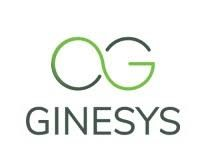Guide to Inventory Accounting in the Retail Sector
Accounting plays a crucial role in the management of retail businesses, emphasizing the accurate monitoring of finances and keeping a keen eye on inventory costs. As a retail entrepreneur, closely monitoring metrics such as inventory value is indispensable. It serves as a barometer, illuminating key insights into the company's financial health and operational efficacy. It’s vital for any business to keep an accurate record of their money but retailers face unique challenges in monitoring and calculating the cost of inventory.
Although knowledge is power, navigating the intricacies of inventory counting and management can often become a time-consuming endeavor. To quickly gain insight into the value of inventory, businesses either need a retail inventory management system that keeps track of the stock in real-time, or a shortcut for efficiently assessing inventory worth. Enter the retail inventory method, designed to provide a streamlined solution for providing insights into the value of inventory.
This blog aims to shed light on the intricacies of inventory accounting within the retail sector, highlighting its profound significance and the multitude of benefits it offers to the industry.

Mastering inventory accounting: the compass for retail entrepreneurs' success.
Understanding Inventory Accounting
The retail method of accounting is a principle used in businesses that have a relatively high number of incoming and outgoing inventory transactions. This method facilitates the determination of inventory value, thereby potentially elevating the efficiency and accuracy of retail business accounting practices. It’s a versatile tool that simplifies the process of appraising inventory while providing valuable insights into the current state of the company’s stock. This approach allows business owners to monitor the Cost of Goods Sold (COGS). We shall discuss some of the options to arrive at the Cost of Goods Sold in the following section.
Retail inventory management involves the continuous monitoring and control of merchandise throughout its lifecycle. This process encompasses tasks such as stock replenishment, order fulfillment, and inventory forecasting, all aimed at ensuring sufficient stock availability while minimizing holding costs. Knowing how much the inventory is worth, businesses can understand sales performance, better manage costs, know when to reorder inventory, and more. Although the retail inventory method doesn’t replace physical inventory counts, it provides a quick estimate that can help power business decisions.

Unveiling the Power of Retail Inventory Management Strategy.
Inventory Valuation Methods
Inventory valuation methods dictate how the COGS and ending inventory are determined, thereby impacting financial statements and tax obligations. The three primary valuation methods used in retail are:
- First-In, First-Out (FIFO): Under FIFO, the cost of the oldest inventory is matched with sales revenue first. This method assumes that goods are sold in the order they are acquired, reflecting current market prices for the remaining inventory. This method can be advantageous as it acknowledges price fluctuation in times of economic volatility. The FIFO method involves dividing the COGS for the items purchased first by the number of units purchased. This method gives the average price for one unit of inventory, while the retail inventory method gives the value of the entire inventory or the specific segment of the inventory.
- Last-In, First-Out (LIFO): LIFO assumes that the most recently acquired inventory is sold first. While this method may better align with current costs during inflationary periods, it may not accurately represent the true flow of goods. In the LIFO method, inventory is calculated based on COGS for the newest items in the inventory. The formula for inventory value using the LIFO method involves dividing the COGS for items purchased last by the number of units purchased. As with the FIFO method, the LIFO method calculates an average cost per unit.
- Weighted Average Costs: The weighted average method calculates the average cost of inventory items based on the total cost of goods available for sale divided by the total units available. This approach smoothens out cost fluctuations and is relatively simple to compute. This approach is commonly applied when the goods are non-perishable and can be readily mixed or rotated. Unlike LIFO and FIFO, this method isn’t concerned with when the items were purchased. To find inventory value as per the weighted average costs method, divide the average COGS by the number of units in the inventory.

To accurately assess the value of inventory, retailers must consider various cost components, including:
- Purchase Costs: The direct cost of acquiring merchandise, including invoice prices, discounts, and rebates.
- Transportation Costs: Expenses associated with transporting goods from suppliers to the point of sale, encompassing freight charges, customs duties, and logistics fees.
- Storage Costs: Costs incurred for warehousing and storing inventory, including rent, utilities, insurance, and handling charges.
- Obsolescence and Shrinkage: Factors such as product obsolescence, theft, damage, and spoilage can lead to inventory shrinkage, impacting both financial performance and valuation accuracy.
By understanding and effectively managing these cost components, retailers can optimize inventory turnover, minimize holding costs, and enhance overall profitability.

Unveiling the Power of Retail Inventory Management Strategy.
Example of Simple Retail Inventory Accounting
Imagine a retail business selling various types of goods, perishable or those with longer shelf life, with items priced differently. Nevertheless, the retailer has a 30% discount on all items, regardless of what they are.
Consider that the retailer conducted a physical count of the inventory at the quarter's start, determining its initial cost value to be $50,000. Upon reviewing the sales data from the point-of-sale system, the retailer noticed that the sales amounted to $30,000 by the quarter's end. Additionally, he invested $5,000 in restocking the goods during the quarter.
Using these figures, let’s calculate the closing inventory value with the retail method as follows:
- Starting Inventory (cost basis): $50,000
- Additional Inventory Acquired (cost basis): $5,000
- Total Inventory Available for Sale (cost basis): $55,000
- Quarterly Sales (retail price): $30,000
- Sales Cost: ($30,000 * 30%) = $9,000
- Remaining Inventory Value (cost basis) – Sales Cost = Final Inventory Value
- $55,000 – $9,000 = $46,000
Hence, it's reasonable to conclude that the inventory of the retailer is valued at $46,000 at the quarter's close.

Benefits of Simple Retail Inventory Accounting
Let's delve into the numerous benefits provided by the retail inventory method for the retail sector.
- Ease of Use: The Inventory Accounting Method simplifies the inventory valuation process, making it accessible to small and medium-sized retailers. Its straightforward approach eliminates the need for complex calculations, allowing business owners to focus on core operations.
- Simplified Calculations: By relying on retail prices and predetermined cost-to-retail ratios, retailers can swiftly calculate their COGS and ending inventory. This simplicity streamlines accounting procedures and reduces errors. The retail accounting method assumes uniform pricing and price changes across all product units, making inventory valuation straightforward.
- Cost Savings: Implementing the Retail Method can lead to cost savings for retailers. By avoiding the expenses associated with more sophisticated inventory valuation methods, businesses can allocate resources more efficiently. While manual inventory checks are essential, their frequency can be reduced with retail accounting, leading to cost savings.
- Inventory Management: Effective inventory management is crucial for retail success. The Retail Method provides retailers with valuable insights into their inventory turnover rates and enables them to make informed decisions regarding purchasing, pricing, and promotions.
- Tax Compliance: Complying with tax regulations is a priority for all businesses. The Retail Method helps retailers meet their tax obligations by providing a reliable framework for calculating taxable income and reporting inventory values.
- Performance Evaluation: Accurate financial reporting is essential for evaluating a retail business's performance. The Retail Method facilitates the generation of precise financial statements, empowering retailers to assess their profitability and identify areas for improvement. This accounting method also reveals insights into sales performance.
Is the Retail Accounting Method Right for Your Business?
Choosing the right accounting method for retail business is crucial for maintaining accurate financial records and complying with tax regulations. Among the various accounting methods available, the retail accounting method stands out for its simplicity and ease of use. However, it may not be suitable for every business. The retail accounting method depends on the business. The retail method might be a good fit for organizations prioritizing ease and straightforwardness in their accounting practices.
- Small to Medium-sized Retailers: For a small to medium-sized retail business with a high volume of inventory turnover, the retail accounting method can be a suitable choice due to its simplicity and ease of use.
- Consistent Markup: The retail accounting method is best suited for businesses with consistent markups on their inventory items. If the pricing strategy of the current goods involves constant markup percentages, this method will be a good fit.
- Homogeneous Inventory: Businesses with homogeneous inventory, where items are largely similar and have similar markups, are well-suited for the retail accounting method.
- Not Suitable for All Industries: However, the retail accounting method may not be suitable for all types of retail businesses but businesses with highly diverse inventory or the one dealing with rapidly changing market prices may find this method less effective.

Challenges and Solutions by Ginesys
| Challenges | Solutions with Ginesys |
|---|---|
| Seasonal demand fluctuations | Implement dynamic pricing strategies to match demand fluctuations, use historical data and predictive analytics for accurate forecasting, and collaborate closely with suppliers to adjust inventory levels accordingly. |
| Inventory forecasting and demand planning | Utilize advanced inventory management software with robust forecasting algorithms, employ models for accurate demand prediction, and establish strategic partnerships with suppliers for real-time inventory updates. |
| Inventory errors and fraud prevention | Implement barcode and RFID technology for accurate inventory tracking, conduct regular audits and reconciliation processes, enforce strict access controls and user permissions in inventory management systems, and educate employees on fraud detection and prevention measures. |
| Managing deadstock and slow-moving inventory | Offer discounts and promotions to stimulate sales of slow-moving items, analyze sales data to identify trends and adjust procurement strategies, accordingly, explore liquidation channels for excess inventory, and optimize warehouse layout for efficient storage and retrieval of inventory. |

Navigating challenges of Retail Accounting, Ginesys crafts strategic solutions for success.
Best Practices by Ginesys in Inventory Accounting
With fluctuating consumer demands, seasonal trends, and competitive landscapes, retailers must navigate a complex ecosystem while maintaining profitability and customer satisfaction. Central to this endeavor is Ginesys providing industry-leading inventory accounting practices.
- Regular Auditing and Internal Controls: Regular audits and robust internal controls are important to ensure the accuracy and integrity of inventory data. By conducting periodic audits, retailers can identify discrepancies, prevent fraud, and optimize inventory levels.
- Cross-Functional Collaboration: Successful inventory accounting requires collaboration across departments, including finance, operations, and procurement. Ginesys facilitates seamless communication and data sharing between teams, fostering synergy toward inventory goals.
- Utilization of Inventory Management Software: Ginesys offers cutting-edge inventory management software tailored to the unique needs of retail businesses. From real-time tracking to automated replenishment, Ginesys equips retailers with the tools needed to optimize inventory performance.
- Training and Development of Staff: Effective utilization of inventory management software hinges on the proficiency of personnel. Ginesys provides comprehensive training programs to empower staff with the knowledge and skills required to leverage the full potential of inventory accounting tools.

Innovative inventory accounting by Ginesys: Where precision meets profitability.
As retailers navigate the complexities of the modern retail landscape, effective inventory accounting becomes indispensable for retail success in today's dynamic marketplace. By implementing best practices offered by Ginesys, retailers can gain a competitive edge, drive operational efficiency, and enhance customer satisfaction. With Ginesys as a trusted retail partner, retailers can embark on this journey with confidence, knowing they have access to innovative solutions and expert guidance every step of the way.

